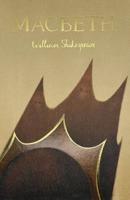Publisher's Synopsis
Excerpt from A History of Classical Greek Literature, Vol. 1 of 2
It is remarkable that the Old dithyrambs were spoken of as introductions to the more solemn cyclic choirs, whereas their dramatic outcome was always played after the tragedies. The critics are ready with msthetical reasons for this, but we are left at a loss for historical facts. Though a flavour of humour was not foreign to the tragedy of Euripides, nor even to that of ieschylus, there seems no doubt that the early Greek drama did not afford scope for the violent contrasts so striking in Shakespeare, and preferred to relegate the low and the grotesque into a separate play associated with solemn tragedy. The extant Cyclops is a sort of farce without much extrava gance, Observing in its hero the decorum suited to a tragic writer, and giving to Silenus and to his attendant satyrs an evidently conventional characterrof laziness, drunkenness and license. The real contest was in that day among the tragedies, and this afterpiece was probably given while the public was discussing the previous plays. In later days the satyric drama seems to have been abandoned, and therefore all the other extant specimens were lost. It is a misfortune that we do not possess at least one from the hands of an acknowledged master in this department, or from the epoch when it had real importance. But the Cyclops explains to us the structure and style of these pieces. These few words may suffice to dispose of this byway of the Greek drama. I now return to the more important history of serious tragedy. About the Publisher Forgotten Books publishes hundreds of thousands of rare and classic books. Find more at www.forgottenbooks.com This book is a reproduction of an important historical work. Forgotten Books uses state-of-the-art technology to digitally reconstruct the work, preserving the original format whilst repairing imperfections present in the aged copy. In rare cases, an imperfection in the original, such as a blemish or missing page, may be replicated in our edition. We do, however, repair the vast majority of imperfections successfully; any imperfections that remain are intentionally left to preserve the state of such historical works.








